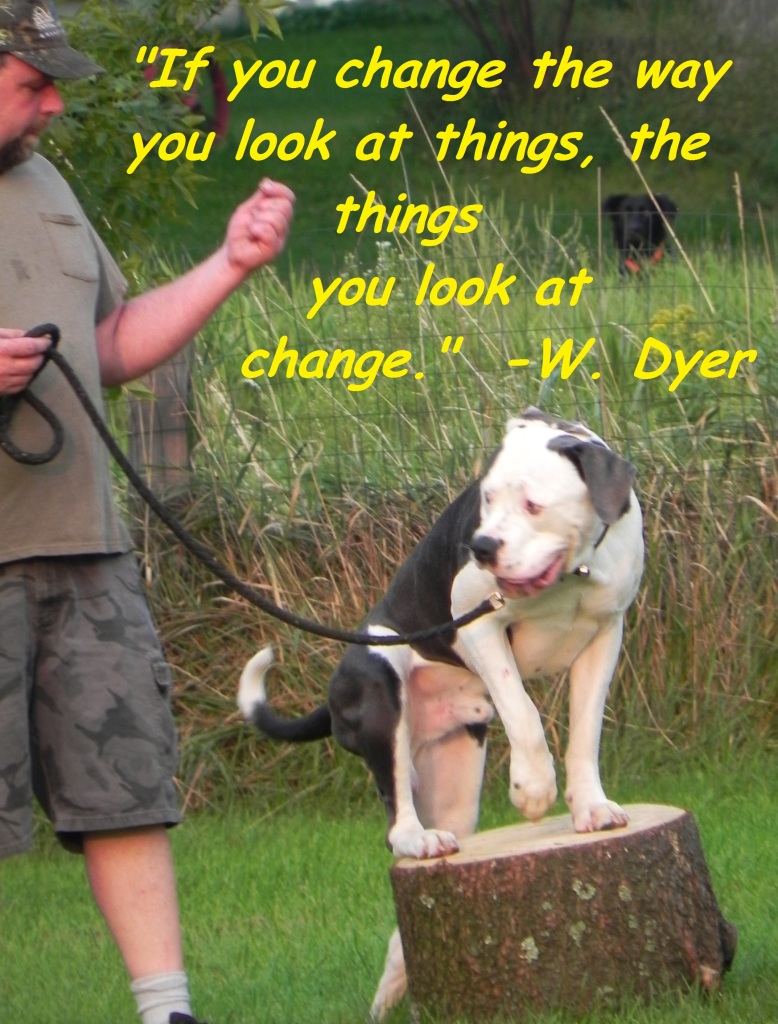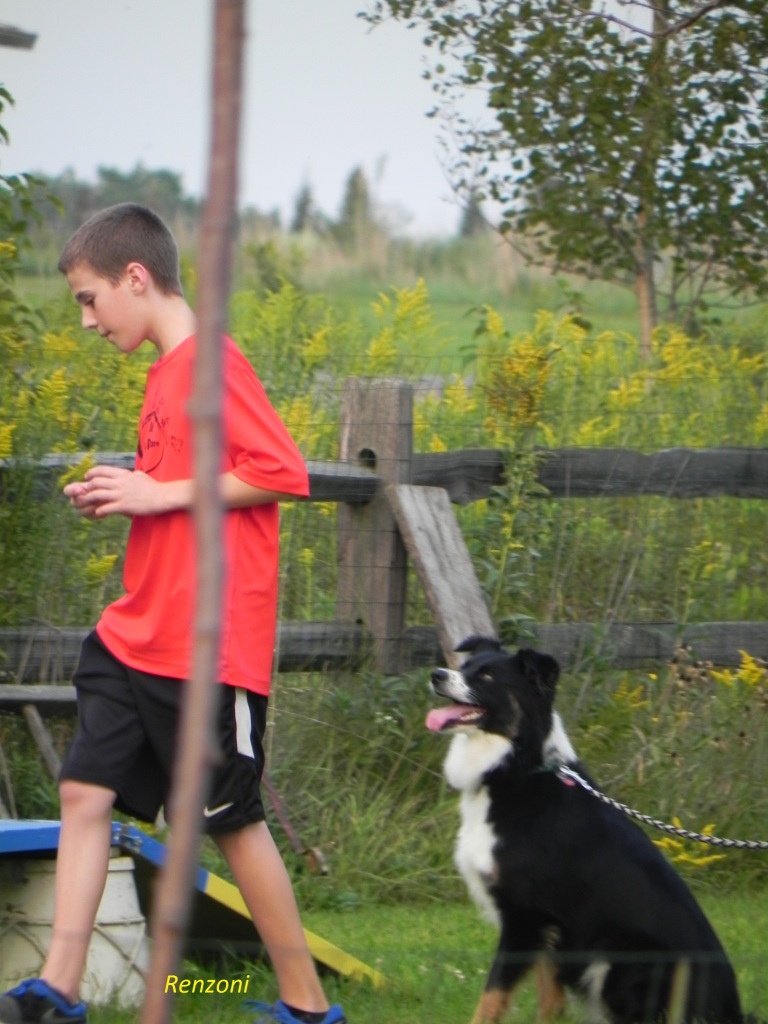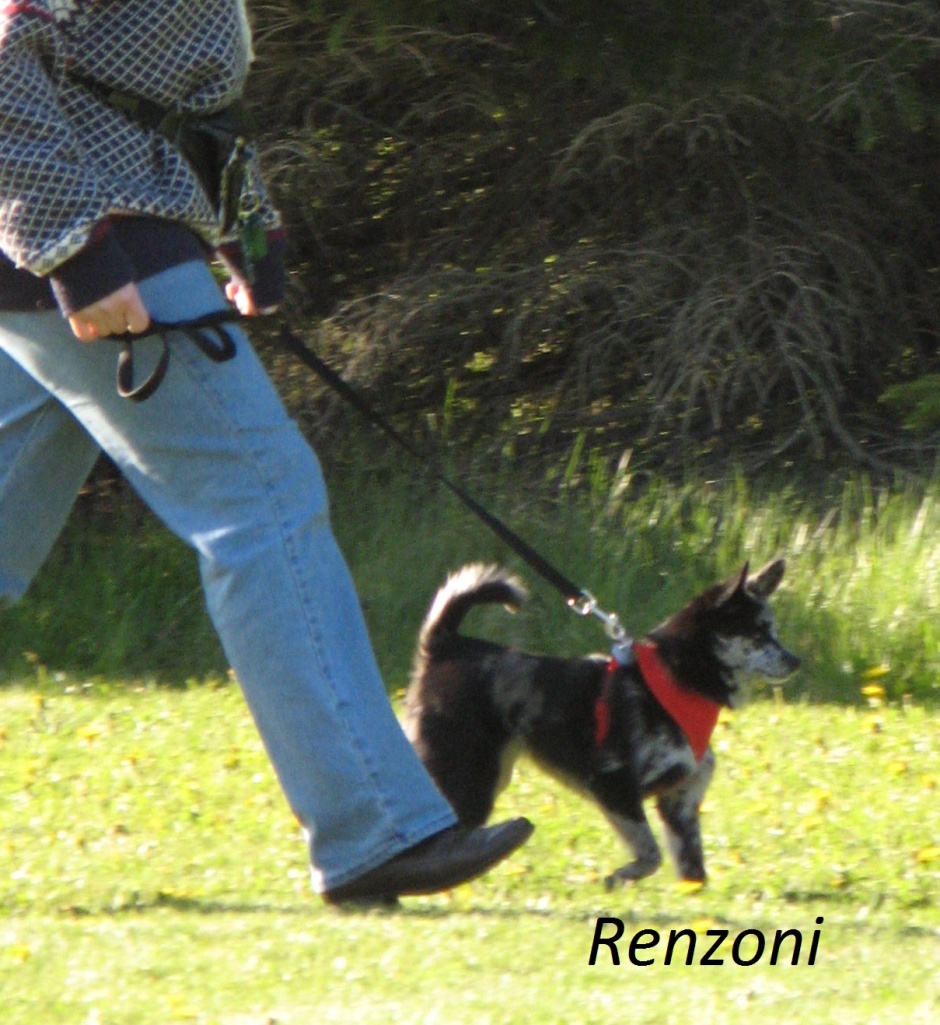
Easy and quick dog training is an oxymoron.
Quick knowledge, fast solution and nobody needs to learn anything, but the dog. Try it, what harm can it cause? Who cares about research? Neighbor said it or multiple studies confirmed it… who wins? Well of course, the neighbor/cousin/friend does, in their random ‘expert’ mode. Science … what science?
Why? Science is all about theories and creating a study and checking. Neighbor/cousin/friend is all about absolute testimonial on a very limited scale (one dog, two dogs, an imaginary dog or a dog seen on video). But somehow people believe testimonials more and are willing to do and allow punishment as a first line of action. I do find that incredibly ugly.

What does the science (lots of science) say … ‘Every living thing learns to improve its condition.’ Reward ensures that a behavior will be done more frequently in the future. Yummy stuff in the garbage – tip it out and eat it (ding, ding, ding – big reward! Behavior will be repeated). Punishment will/can suppress/reduce a behavior. Punishment never creates new behavior (but it can increase fear, increase the punished behavior, anxiety, aggression, apathy and slow learning). Yell NO at dog as he grabs child’s Barbie doll, and dog may drop it and decide not to grab it in the future or… think that grabbing Barbie is one of the most exciting games ever. Other common event: puppy barks or bites and is sprayed with mouth freshener spray, and dog may stop and/or… become afraid of hands or spray sounds or certain scents or…
Learning is a complex topic, which probably is why so many are so confused about how to approach training, and which is also why so many end up training the opposite of what they wanted and then blaming the dog for being uncooperative or stupid and/or … blame themselves for being a bad dog trainer or lacking enough time to have a dog ….
The relationship between the person and their dog is a constant learning process. Given that this process, at least on the part of the person, takes place mostly at an unconscious level, the resulting picture is rarely how you imagine it.
If we think about, for example, walking on a leash it becomes quickly clear that reward and punishment are consistently connected. If the dog doesn’t react, starts sniffing, lunges forward, then most handlers will try pulling him forward or backward (this is positive , +, or aversive punishment). Hence not going forward or going forward too much is what is punished. If the dog walks better, then jerking or pulling are no longer used. This is a negative reward (rewarded by taking the pressure away).
What happens if the leash just stays tight? The dog is not rewarded, but punishment continues for his hard work when he feels pulling pressure on his neck. In this way the dog will become more and more numb to collar pressure, he is being punished continuously through the never-ending use of leash control. Another confounding factor is the oppositional reflex (you pull, then I pull also, like tug-of-war). Then it is usually a case of ‘He likes to pull’ and so ‘has to have’ a prong collar or choke collar or harder jerks or a harness to save his neck.


This ignorance by handlers of the dog’s most basic learning behavior is what creates one of the greatest problems in having a dog and using a leash. Based on excessive attention given to hanging on to their dog, it is possible to overlook what is actually being told to the dog when walking on a leash. The removal of pressure has everything to do with training and learning. The giving of a reward when the dog is in the position you want them to be has everything to do with learning.
People have such a hard time releasing pressure, that I often would rather not let them have a leash at all or use a hands-free leash, so they can’t pull on it while they are trying to train their dog where they want them to walk. It comes down to the human handler creating a habit for herself/himself and the dog. Sticking strictly to the rules so the learned behavior becomes the norm.
The flow of info between a dog and person is called communication. Most dogs are totally confused or begin to switch off, because they are getting contradictory signals. In the house these rules apply … sometimes, in the yard these rules apply … sometimes and the rules change daily. Recently a person told me she wanted to have a rule where her pup didn’t go into the kitchen, but currently his food/water are in the kitchen, and his gate keeps him in the kitchen when she leaves, hmm?
Dogs quit trying when there is no way to know what is expected. Symptoms of ‘switching off’ include; sniffing, zoomies, turning away, quickly leaving, not listening/’selective deafness’, no eye contact by the dog … etc.
To avoid this trap we must get used to handling our dog in a consistent way and build up our dog’s trust in our ability to control/offer rewards.
Only if you have a clear picture in your head can you decide whether a behavior is the one you want or not.
Imagine that you are learning something new and you are punished for every mistake you make … you will quickly give up trying to find out how to do it. Goal: No punishment when learning.

Emotion memory. During training a dog doesn’t only learn the proper cues/commands, but he also memorizes the emotions connected with them. If you are using a lot of punishing actions/sounds, the dog will always recall these negative impressions when you signal or say these cues. From this point of view, its easy to see why many dogs have no motivation to work or learn new things from you. FYI video yourself training something new to check it out – most people use a lot of punishing actions or sounds (no, oh oh, disappointed tones and dog’s name …).
As far as possible, ignore the wrong answers and praise the right ones so that the “cues/commands” are not poisoned at an early stage with bad emotions. If you are having trouble with a cue like come or sit or the dog paying attention when you say his/her name, it is likely you have poisoned the cue – change to a new one and don’t poison this one.
When a dog does not recognize what you want he will try everything to find a solution … set it up so the right solution is likely to happen and wait … Goal: Set it up and wait.
Divide the movement into small steps and your dog will learn more easily. These small learning steps will also help you to figure out any questions for your dog as simply as possible. Take time to think about it from your dog’s point of view. Train individual cues one by one if possible (example a good retrieve includes a sit, stay, cued release, run out, pick up/solid hold, tight turn, speedy return at speed equal to the go out, release of item on cue from preferred position).
Easy dog training is not so easy. It takes thought and learned habits. If your neighbor/friend or even veterinarian suggests do ________ to your puppy because he barks or bites or doesn’t want to be restrained. Consider the situation from your pup’s point of view – has he been rewarded often for the preferred behavior? What is he likely to do if you follow the suggestion? Will he trust you more afterwords? In other words, will your relationship improve? What will you do if their suggestion makes the behavior worse because now your pup is more afraid, more anxious, more aggressive and less willing to learn things from you?
**note the details of learning are simplified for this blog … the theme of learning is a complex topic which includes significant terminology and concepts with various definitions. See https://gentletouchdogtrainingblog.wordpress.com/2015/04/27/here-pup-pup-pup-come-whistle-beep/ for more